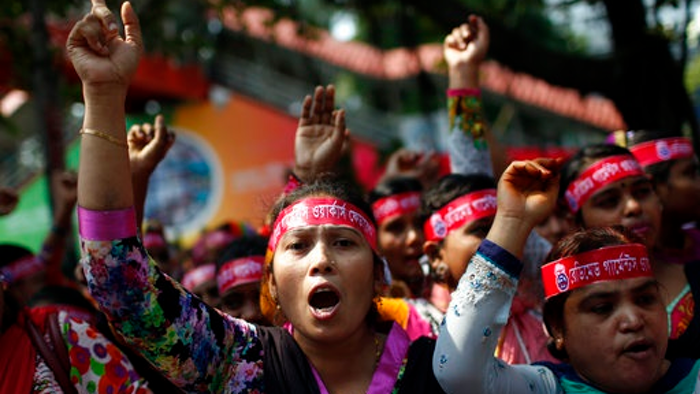
We hail the working peoples throughout the world this Labor Day 2021 as we confront the most trying crisis of our lifetime and a most historic moment for humankind. The global capitalist crisis aggravated by the Covid-19 pandemic has brought immeasurable sufferings, hardships and misery on the toiling masses. The time has struck for us to take back the fruits of our labor. It is time to fight back and liberate ourselves from the scourge of imperialist exploitation, inequality and oppression.
Covid-19 has so far claimed over three million deaths. After the Great Lockdown of 2020, a new wave of pandemic is spreading with new variants posing serious concerns despite the recent vaccine rollouts. Neoliberal policies and austerity measures have so much weakened public health care systems as they are now overwhelmed with both Covid and non-Covid cases.
Unprecedented job and income losses
New annual estimates by the International Labor Organization (ILO) saw labor markets around the world disrupted on a historically unprecedented scale equivalent to 255 million full-time jobs. Working-hour losses were approximately four times greater than during the global financial crisis in 2009 and unprecedented since the Great Depression.
Unemployment numbers reflect only a small proportion of the jobs lost. Many people could not see any opportunity to search for a job successfully, or they were simply unable to do so owing to the COVID-19 restrictions.
After four years when wages grew on average, by 0.4-0.9 per cent annually in advanced G20 economies, wage growth slowed or reversed in two-thirds of countries. Two hundred sixty-six million wage earners are paid less than the minimum wage. Pre-pandemic wage and social cuts compounded present income losses especially for women and young workers.
The pandemic led to some remote working arrangements reinforcing the growth and impact of the digital economy. However, at the same time, the crisis laid bare and exacerbated the growing digital divide, deepening existing class and social inequalities.
Government stimulus and debt from workers’ blood
More than $20-trillion have been spent by governments as stimulus measures in a vain attempt to recover from the pandemic. This amount has been sucked from the workers’ own toil and blood. Developed countries spent 270 times more, while developing countries spent 18 times more in a desperate attempt to recover from COVID-19.
The World Health Organization is practically begging for more funding for its COVAX facility as the Big Pharma vaccine rollout prioritized rich countries.
Developing countries are facing major fiscal constraints, including potential debt default, falling remittances and revenues from international trade in goods and services, and foreign direct investment contraction.
In fact, the era of financial globalization has already reached its peak in 2007 when global cross-border capital flows reached a record $12.7-trillion. The credit crunch and the ensuing eurozone crisis halted unbridled capital mobility. Within 10 years, capital flows had dropped to $5.9-trillion, driven by a sharp decrease in cross-border lending.
Divided world, united peoples in protest
Instead of globalization, segmentation has appeared along with bitter economic and political rivalries. This has sparked more armed interventions of the US in the Middle East, expansion of NATO bordering Russia and conflicts with China in Asia and in Latin America and Africa. The US and its allies continue to be belligerent on its rivals China and Russia, as well as in Syria, Iran, North Korea, Cuba, Venezuela and the rest of the world.
Covid-related restrictions have been used by fascist and ultra-right forces while imperialist wars and war preparations intensify. Direct military sales by U.S. companies jumped 8.4% to $124.3 billion in 2020 from $114.7 billion in 2019 with an additional $50.78 billion passed through sales with the US government.
Intensifying imperialist and fascist repression have engendered more democratic struggles, strikes and protests — from Asia, Latin America and Africa, to the very heart of the US and Europe. Health workers stood among the front liners.
Armed struggles rage on in Palestine and Kurdistan, India and the Philippines, with renewed forces in Colombia, Burma among others. Workers are taking stock to build their own political party and go deep among the laboring masses. International solidarity against imperialism and fascism is broadening and consolidating.
Historic moment
This year, we are celebrating the 150th anniversary of the historic Paris Commune of 1871. It showed the working class the possibilities of a government led by workers. The world has never been the same with the victory of the October Revolution amid the First World War. This was followed by the liberation of China after the Second World War. After the collapse of the former Soviet Union and the restoration of capitalism in China, the working class and oppressed peoples are learning more vital lessons today and for the future of humanity.
The Hay Market strike of 1886 resulted in the collective struggle of workers for an eight-hour working day. The worker’s economic struggle for better working and living conditions is being raised to a great political battle between labor and capital, between democratic forces and reactionary ruling elites.
As we celebrate International Labor Day today, we remember all our working-class heroes and the blood they shed for our cherished rights, freedom and ultimate liberation from exploitation.
It is time to fight back with renewed strength and vigor. We look not for a “new normal” under the same capitalist greed but for a new world of equality, social justice, and sustaining growth for the working people’s needs and aspirations.